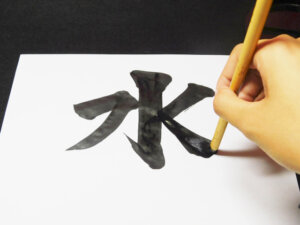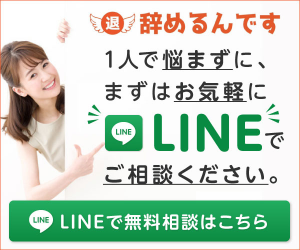Contents
- 1 How to pass the "Kanken" for foreigners【外国人のための「漢検」合格の方法】
- 2 What is "Kanji test"? 「漢字検定」って何
- 3 What you can understand by "Kanji test" 「漢字検定」でわかることは
- 4 Difference between JLPT and Kanji test JLPTと漢字検定のちがい
- 5 "Kanken" can be taken outside Japan 「漢検」は日本以外でも受験できる
- 6 Precautions when receiving "Kanken" 「漢検」を受ける時の注意
- 7 About measures when foreigners receive "Kanken" 外国人が「漢検」を受ける時の対策について
- 8 How to pass the "Kanken" for foreigners Summary まとめ
How to pass the "Kanken" for foreigners【外国人のための「漢検」合格の方法】
Recently, the number of foreigners learning Japanese has increased.
最近、日本語を学ぶ外国人が増えた。
The number of international students is increasing.
留学生の数は、どんどん増えている。
About 300,000 international students come to Japan every year.
毎年、海外から30万人ほどの留学生が、日本へ来る。
クラスに突然、外国人転校生がやって来た
-

-
外国人が転入してきた【日本語ハナセマセン】担任ができる18のこと&便利道具
Contents1 外国人が転入してきた【日本語ハナセマセン】担任ができる18のこと&便利道具2 「日本語が話せない児童生徒」を受け入れるとき 担任としてできることは2.1 1、「家庭訪問」をして家族 ...
続きを見る
The purpose of studying abroad is various.
留学の目的は、さまざまだ。
Some people work in Japan and want to live in Japan,
日本で仕事をし、日本に住みたい人もいれば、
After working in Japan for a few years and making money, some people go home.
日本で何年か仕事をして、お金を稼いだら、祖国へ帰る人もいる。
International students have different purposes,
留学生の目的はそれぞれだが、
A certain level of Japanese proficiency is required in order to attend school or work in Japan.
日本の学校に通ったり、仕事をしたりするためには、ある程度の日本語能力が必要だ。
The number of foreigners taking the "Japanese Kanji Test" to prove their Japanese ability is increasing.
そして、自分の日本語能力を証明するために、「日本漢字検定」を受験する外国人が増えてきているのだ。
What is "Kanji test"? 「漢字検定」って何

「漢検(日本漢字能力検定)」は、漢字能力を測定する技能検定です。
漢字を「読む」「書く」という知識量のみならず、漢字の意味を理解し、文章の中で適切に使える能力も測ります。
「漢検」の評価は社会的な評価でもあり、学んだことがすぐ生き、生涯楽しく学べ、進学や就職にも役立つため教育や企業の現場で今注目を集めている検定です。
漢字は年齢に関係なく学べる身近な学習対象であるため、3歳から102歳という幅広い年齢層の方が「漢検」に挑戦しています。
"Kanken (Japanese Kanji Proficiency Test)" is a skill test that measures kanji ability.
Not only the amount of knowledge to read and write kanji, but also the ability to understand the meaning of kanji and properly use them in sentences is measured.
The “Kanken” evaluation is also a social evaluation, and it is a test that is currently attracting attention in the field of education and companies because it makes it possible to live immediately after learning, to enjoy learning for the rest of the life, and to help you go on to school or get a job.
Kanji is a familiar learning object that can be learned regardless of age, so a wide range of age groups from 3 to 102 years old are trying to "Kanken".
日本漢字能力検定協会
Japan Kanji Proficiency Test Association
Every year, about 2 million people take the "Kanken" exam.
毎年、200万人前後の人が、「漢検」を受験している。
"Kanken" is a test that shows how about your "Kanji" is mastered.
「漢検」は、どの程度の「漢字」をマスターしているかがわかるテスト。
The “Kanken” became a point to be evaluated in high school entrance exams and employment examinations.
「漢検」は、高校入試や就職試験などでも、評価されるポイントとなった。
As the association says, it is becoming a "social evaluation" of the power of Japanese.
協会の言う通り、日本語の力の、一つの「社会的な評価」となってきている。
What you can understand by "Kanji test" 「漢字検定」でわかることは
The Kanji test is divided into 12 levels from 1st to 10th grade.
漢字検定は1級~10級まで、12段階のレベルに分かれている。
| 漢字検定 出題レベル | ||
|---|---|---|
| 級 | レベル | 出題内容 |
| 10級 | 小学校1年生程度(80字) | 読み・書き・筆順・画数 |
| 9級 | 小学校2年生程度(240字) | 読み・書き・筆順・画数 |
| 8級 | 小学校3年生程度(440字) | 読み・書き・部首・筆順・画数・送り仮名・対義語・同音 |
| 7級 | 小学校4年生程度(642字) | 読み・書き・部首・筆順・画数・送り仮名・対義語・同音・三字熟語 |
| 6級 | 小学校5年生程度(835字) | 読み・書き・部首・筆順・画数・送り仮名・対義語・同音・三字熟語・熟語の構成 |
| 5級 | 小学校6年生程度(1026字) | 読み・書き・部首・筆順・画数・送り仮名・対義語類義語・同音・誤字・四字熟語・熟語の構成 |
| 4級 | 中学校程度(1339字) | 読み・書き・部首・筆順・画数・送り仮名・対義語類義語・同音・誤字・四字熟語・熟語の構成 |
| 3級 | 中学校卒業程度(1623字) | 読み・書き・部首・筆順・画数・送り仮名・対義語類義語・同音・誤字・四字熟語・熟語の構成 |
| 準2級 | 高校在学程度(1951字) | 読み・書き・部首・筆順・画数・送り仮名・対義語類義語・同音・誤字・四字熟語・熟語の構成 |
| 2級 | 高校卒業程度(2136字) | 読み・書き・部首・筆順・画数・送り仮名・対義語類義語・同音・誤字・四字熟語・熟語の構成 |
| 準1級 | 大学一般程度(3000字) | 読み・書き・故事ことわざ・対義語類義語・同音・誤字・四字熟語 |
| 1級 | 大学一般程度(6000字) | 読み・書き・故事ことわざ・対義語類義語・同音・誤字・四字熟語 |
Grade 10 is easy and Grade 1 is a difficult question.
10級がやさしくて、1級がむずかしい問題となっている。
How difficult is it compared to the "JLPT Japanese Language Proficiency Test"?
「JLPT 日本語能力試験」と比べると、どのくらいの難易度か。
| 漢字検定とJLPTの比較(目安) | |||
|---|---|---|---|
| JLPTのグレード | 漢字数 | 同レベルの漢検 | 漢字数 |
| JLPT N1 | 1232字 | 漢検4級 | 1339字 |
| JLPT N2 | 367字 | 漢検8級 | 440字 |
| JLPT N3 | 367字 | 漢検8級 | 440字 |
| JLPT N4 | 166字 | 漢検9級 | 240字 |
| JLPT N5 | 79字 | 漢検10級 | 80字 |
JLPT N1 will have knowledge of Japanese junior high school level kanji.
JLPTのN1は 日本の中学生レベルの漢字の知識があることになる。
Level 4 of the Kanji test is a necessary level for jobs that require some kind of communication.
漢字検定の4級は、何らかのコミュニケーションが必要な仕事では、必要なレベルである。
It is highly evaluated that foreigners have that level of ability in kanji.
外国人がその級を持っているということは、ずいぶん漢字能力が高いと評価される。
Since "Kanken" is an examination of only Kanji, you can answer it if you have knowledge.
「漢検」は漢字だけの試験なので、知識があれば答えることができる。
On the other hand, since JLPT is a "Japanese Language Proficiency Test", comprehensive Japanese skills are required.
一方、JLPTは「日本語能力試験」なので、総合的な日本語の力が必要となる。
If you pass both tests, you can get high evaluation in Japan,
どちらの試験も合格すると、日本でも高い評価をもらえるが、
JLPT will receive a higher evaluation.
JLPTの方が、より高い評価をもらえるだろう。
Although many students and adults take the "Kanken", it is a difficult test even for Japanese people. Foreigners (particularly those outside the Kanji area) should start from the 10th grade.
「漢検」を受ける生徒や大人は多いが、日本人でもむずかしい試験でもある。外国人の人(特に漢字圏以外の人)は、10級から順番に受けていくのが良いだろう。
If you want to take higher grades because you know the basic kanji, there is a site where you can check the standard of the examination grade, so you should try it.
初歩の漢字はわかっているから、もっと上の級が受けたいという人は、受験級の目安チェックができるサイトがあるので、試してみるといいだろう。
漢検受験級の目安チェック Checking the standard for the Kanken examination https://www.kanken.or.jp/kanken/meyasucheck/
As reference,
参考として、
If you pass the 5th level of "Kanken" (about 6th grade of elementary school),You won't have any problems with standard daily life in Japan.
「漢検」の5級(小学校6年生程度)に合格したら、日本でのスタンダードな日常生活では困ることはないだろう。
In Japan,
日本国内で、
If you want to do some kind of paperwork or work on something a little more specialized, it is better to have Kanji ability of 3rd grade or higher.
なんらかの書類の手続きをしたり、少し専門的なことに取り組もうとするなら、3級以上の漢字能力がある方が良い。
And if the grade around that breaks through,
そして、そのあたりのグレードが突破できたら、
Human relations in Japan should deepen.
日本での人間関係も、深まっていくはずだ。
For the time being, I recommend receiving from the 10th grade.
とりあえず、10級から受けることをすすめる。
Even small children such as infants are receiving it,
幼児などの小さな子どももわりと受けているが、
The number of foreign examinees is increasing.
外国人の受験者も増えてきている。
Difference between JLPT and Kanji test JLPTと漢字検定のちがい

Kanji test「漢字検定」は
"Kanji test" three times a year
「漢字検定」は年3回
* Kanken CBT (Computer Based Testing) can be taken anytime for one year.
※漢検CBT(Computer Based Testing)は1年間いつでも受験できる。
・ Recognized as having kanji power 漢字の力があると認められる
・ You can appeal when you get a job in Japan 日本で就職のときにアピールすることができる
・ Be able to write kanji correctly 正しく漢字が書けるようになる
「JPLT 日本語能力試験」は
"JPLT Japanese Proficiency Test" twice a year
「JPLT 日本語能力試験」は年2回
・ Receive preferential treatment for immigration control in Japan 日本の出入国管理上の優遇措置が受けられる
・ Affects whether or not you can take the Japanese national examination 日本の国家試験の受験の可否に影響する
・ You can get a job at a Japanese company 日本の会社に就職できる
・ If you pass the high grade, the merit is great. 上のグレードで合格すれば、メリットは大きい。
* Please note that this is completely different from the Japanese Language Test.
※なお、「日本語検定」とは、まったく別のものなので注意する。
漢検 https://www.kanken.or.jp/kanken/
JLPT 日本語能力試験 https://www.jlpt.jp/index.html
※日本語検定(* ←This is not a big advantage for foreigners yet) 外国人にとってはまだ大きなメリットはないだろう) https://www.nihongokentei.jp/
"Kanken" can be taken outside Japan 「漢検」は日本以外でも受験できる

12 overseas test sites 海外の受験会場 12か所
<USA> New York 〈アメリカ〉ニューヨーク
<USA> California 〈アメリカ〉カリフォルニア
<USA> Arizona 〈アメリカ〉アリゾナ
<Canada> Burnaby 〈カナダ〉バーナビー
<France> reel 〈フランス〉リール
<France> Grenoble 〈フランス〉グルノーブル
<Germany> Düsseldorf 〈ドイツ〉デュッセルドルフ
<Singapore> Singapore 〈シンガポール〉シンガポール
<Bangkok, Thailand 〈タイ〉バンコク
<Korea> Ulsan 〈韓国〉ウルサン
<Australia> Brisbane 〈オーストラリア〉ブリスベン
<Australia> Sydney 〈オーストラリア〉シドニー
Currently, "Kanken" can be taken in countries other than Japan.
現在、「漢検」は日本以外の国でも受験することができる。
* Kanken CBT is limited in the countries and places where you can take the exam, so it is necessary to confirm.
※漢検CBTは、受験できる国と場所が限定されているので、確認が必要だ。
"Kanken" to set up examination venues around the world
世界中に、受験会場を設営する「漢検」
This is proof that the number of people learning "Kanji" is increasing all over the world.
世界中で「漢字」を学ぶ人たちが増えている証拠だ。
That is also evidence that the number of “people learning Japanese” has increased.
それは、「日本語を学ぶ人」が増えた証拠でもある。
Precautions when receiving "Kanken" 「漢検」を受ける時の注意

Precautions when taking the "Kanken" at the test site
試験会場で「漢検」を受験するときの注意点
When writing "Kanji",
「漢字」を書く時は、
You have to keep a certain shape such as "stop", "splash", "harai".
「とめ」「はね」「はらい」などの決められた形を守らなければならない。
Strictly speaking, the standard for "use of kanji" is set by the "Cultural Agency".
厳密には、「文化庁」というところから、「漢字使用」の目安が定められている。
Agency for Cultural Affairs Cabinet Notification "Common Kanji Table" 文化庁 内閣告示 「常用漢字表」https://www.bunka.go.jp/kokugo_nihongo/sisaku/joho/joho/kijun/naikaku/kanji/
Foreigners study kanji,
外国の人が、漢字の勉強をして、
Furthermore, is it possible to write kanji by observing even these detailed rules?
さらに、この細かいきまりまでを守って漢字が書けるか。
That would be a little difficult for a foreigner studying alone.
それは、一人で学習している外国人にとっては少し難しいだろう。
In Japan, I learned about the detailed structure of kanji when I was in elementary school.
日本では、小学生の頃、漢字の細かい構造について学ぶ。
However, as an adult, it becomes less protected.
しかし、大人になると、それはあまり守られなくなる。
At the time of "Kanken", it is enough if more than half is completed.
「漢検」のときも、だいたいできていればいい。
If the shapes are the same, that's enough.
形が同じように書けていたら、それで十分だ。
You don't have to be very nervous.
あまり、神経質になる必要はない。
However, there are some things to remember.
ただし、覚えなければならないことがある。
For example, in 10th grade, it is "stroke order" and "stroke count".
たとえば、10級では、「筆順」と「画数」だ。
When learning Kanji, it is better to practice and learn these two things many times.
漢字を学ぶとき、この2つは何度も練習して、身につける方が良い。
When learning kanji,
漢字を学ぶときに、
The importance of "stroke order" and "stroke count" is related to Chinese and Japanese culture.
「筆順」「画数」が重視されるのは、中国や日本の文化に関係がある。
In China, there is a culture called “calligraphy”, and it is good to write beautiful characters.
中国では、「書道」という文化があり、字を美しく書くことが良いことだとした。
Because of this trend, you must learn "stroke order" and "stroke count".
その流れもあり、「筆順」「画数」は学ばなければならない。
About measures when foreigners receive "Kanken" 外国人が「漢検」を受ける時の対策について
To acquire "reading power" 「読む力」を身につけるために
Point
Watch Japanese TV and try to make it "subtitled" as much as possible.
日本のテレビを見て、できるだけ「字幕有り」にしておこう。
On TV, you can listen to various types of conversation, such as daily Japanese conversation, official conversations, and formal conversations.
テレビは、日本の日常会話が流れたり、オフィシャルな会話や、フォーマルな会話など、さまざまなタイプの会話を聞くことができる。
So, turn on the "subtitle function" on the TV and read the subtitles while checking how to read the kanji.
そこで、テレビの「字幕機能」をONにして、字幕を読みながら、漢字の読み方を確認しよう。
If you continue every day, it will be effective.
毎日続けると、効果がでる。
Learning kanji is basically the same as “memorizing words”.
漢字を覚えることは、基本的には「単語を覚えること」と同じだ。
While learning how to read kanji, develop your vocabulary.
漢字の読み方を身につけながら、単語力も養おう。
And to improve reading efficiency, "know the meaning of kanji".
そして、読むときの効率をあげるには、「漢字の意味を知る」ことだ。
Kanji are called "ideographic characters" and each has its own meaning.
漢字は、「表意文字」といって、それぞれに独自の意味がある。
Point
Understanding the "meaning" of kanji will help predict when reading.
漢字の「意味」を理解すると、「読む」ときの予測にも役立つ。
To acquire "writing ability" 「書く力」を身につけるには

When writing kanji, "stroke order" and "stroke count" are important factors.
漢字を書くときには、「筆順」と「画数」が大事な要素になる。
To acquire "stroke order" and "stroke count",
「筆順」と「画数」を身につけるためには、
Point
Learn "Japanese calligraphy."
「書道」を習うことだ。

書道 syodo〈Japanese calligraphy〉
"Japanese calligraphy" is a Japanese character culture that doesn't neglect one point or one stroke.
「書道」は一点、一画もおろそかにしない、日本の字の文化だ。
If you use "Japanese calligraphy," you can understand how the brush is carried and the kanji are made.
「書道」をすると、どういう筆の運び方で、漢字ができてるのかが、理解できる。
Japanese calligraphy is the fastest way to learn kanji.
漢字を習得するのに「書道」は一番はやい方法だ。
And to efficiently develop "writing ability", "knowing the structure of kanji" is also important.
そして、「書く力」を効率的に伸ばすには、「漢字の構造を知る」ことも大事だ。
Kanji consists of four major parts: "bias," "straw," "crown," and "leg."
漢字は、「偏」「旁」「冠」「脚」という大きな四つの部分からなっている。
The structure of kanji 漢字の構造は
偏(へん):左側に位置する Bias: Located on the left side
旁(つくり):右側に位置する Tsukuri: Located on the right side
冠(かんむり):上側に位置する Crown: Located on the upper side
脚(あし):下側に位置する Leg : Located on the lower side
構(かまえ):外側に囲むように位置する Structure: Located so as to surround the outside
垂(たれ):上部から左側をおおうように位置する Dripping: Positioned from the top to cover the left side
繞(にょう):左側から下側をとりまいて位置する Nyo: Positioned from the left side to the lower side
You can learn efficiently by breaking down the kanji and knowing the structure.
漢字を、ばらばらにして、構造について知ると効率よく学べる。
How to pass the "Kanken" for foreigners Summary まとめ

Foreigners (particularly those who are not in the Kanji area) should first take the "Kanken" from Level 10.
外国人(特に漢字圏以外の人)は、まずは「漢検」10級から受験してみよう。
Level 10 is at the same level as JLPT N5 and is a good content for beginners learning kanji.
10級は、JLPT N5と同じレベルで、漢字を学ぶ初心者には良い内容だ。
For the kanji test,
漢字の試験には、
Contents such as "reading", "writing", "stroke order", and "stroke count" are always included.
「読み」「書き」「筆順」「画数」といった内容が必ずついてくる。
First of all, kanji with a small number of strokes, such as 10th grade kanji,
まずは、10級の漢字のように、「画数」の少ない漢字で、
Let's master the basic kanji "how to carry a brush".
基本的な漢字の「筆の運び方」をマスターしよう。
By mastering the "basic way of carrying a brush," even upper-class you can use it.
「基本的な筆の運び方」をマスターすることで、上の級でも、それを活用することができるからだ。
A smartphone app for learning "stroke order" and "stroke count" 「筆順」・「画数」を学ぶためのスマホアプリ
There is a recommended smartphone application for learning "stroke order" and "stroke count".
「筆順」・「画数」を学ぶために、おすすめのスマホアプリがある。

This app is a very convenient app that allows you to quickly check the "stroke order" and "stroke count".
このアプリは、「筆順」や「画数」をすぐ調べることができて大変便利なアプリです。
Practice reading and writing Kanji little by little every day.
毎日、少しずつ漢字の読み書きを練習しましょう。
必ず合格できる問題集は
If you want to pass the "Kanken", the past collection of questions is the best!
「漢検」の合格を目指すなら、過去問題集がベスト!
There is a fixed range for Hanken! The same problem is repeated!
漢検は出る範囲が決まっている!同じ問題が繰り返し出る!



